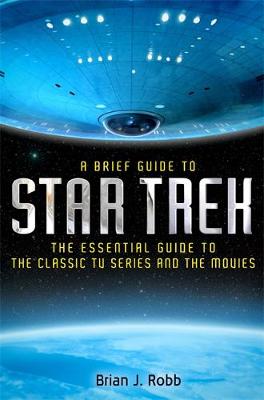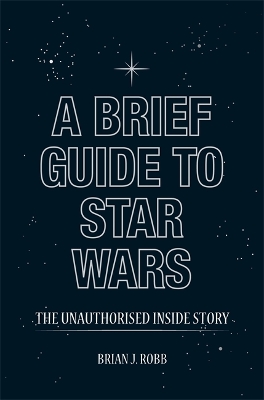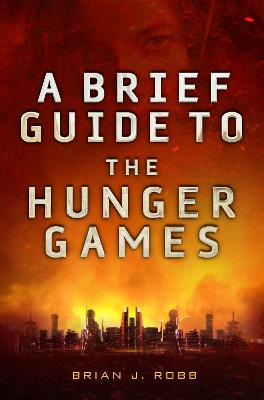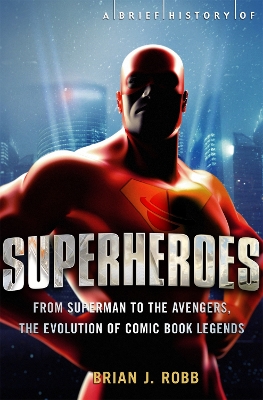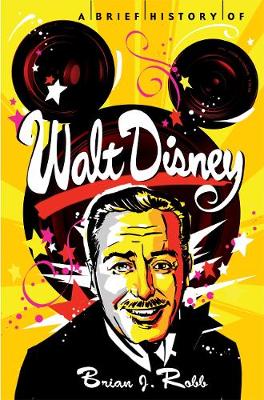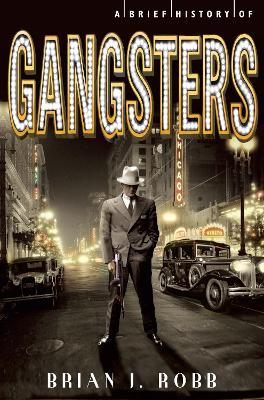Brief Histories
6 total works
George Lucas was a rebel, refusing to make films in the style of the dying studio system, relentlessly pushing the technology of the day, and almost alone in understanding the potential of merchandising; but he was a rebel who built an empire.
From the staggering unexpected success of the original Star Wars in 1977, when cinema attendances exceeded 20 million for the first time since 1963, through The Empire Strikes Back and Return of the Jedi, then the 'dark times', the 16 years leading to the blockbusting prequel trilogy - this is the fascinating story of how it all happened.
Life-long Star Wars fan and movie journalist Brian J. Robb edited the official Star Wars magazine for a decade and visited the sets of Attack of the Clones and Revenge of the Sith in Australia (observing director George Lucas at work), as well as the famous Skywalker Ranch. He has interviewed many of the stars and crew of all six Star Wars movies.
A comprehensive and compelling guide to Suzanne Collins's bestselling young-adult, dystopian trilogy The Hunger Games, Catching Fire and Mockingjay. Already a publishing phenomenon to rival Harry Potter (over 50 million copies sold), the four blockbuster movies starring Jennifer Lawrence have grossed almost $3 billion dollars at the box office. Suzanne Collins has created a series of characters and situations that have struck a chord not only with the target audience of teenagers, but which have also drawn in adult readers: the series is second only to Harry Potter in NPR's popular poll of the Top 100 Teen Novels.
Robb explores themes in The Hunger Games, and the influences and inspirations that lie behind the books, highlighting where Suzanne Collins has drawn on mythology and history, reshaping them to fit her universe. He examines the characters and situations created in the book and how these have impacted on the books' largely teen readership. He also looks at reactions to the books from fans and critics, both acclaim and criticisms faced by the author.
Robb chronicles the adaptation of The Hunger Games from acclaimed, best-selling novel to blockbusting film. With a script by Suzanne Collins herself, the film has made stars of Jennifer Lawrence as Collins' heroine Katniss Everdeen, Josh Hutcherson as Peeta Mellark and Liam Hemsworth as Gale Hawthorne.
A fascinating written exploration of the superhero phenomenon, from its beginnings in the depths of Great Depression to the blockbuster movies of today.
For over 90 years, superheroes have been interrogated, deconstructed, and reinvented. In this wide-ranging study, Robb looks at the diverse characters, their creators, and the ways in which their creations have been reinvented for successive generations. Inevitably, the focus is on the United States, but the context is international, including an examination of characters developed in India and Japan in reaction to the traditional American hero.
Sections examine: the birth of the superhero, including Superman, in 1938; the DC family (Superman, Batman, Wonder Woman and The Justice Society/League of America), from the 1940s to the 1960s; the superheroes enlistment in the war effort in the 1940s and 50s; their neutering by the Comics Code; the challenge to DC from the Marvel family (The Fantastic Four, Spider-Man, and The X-Men), from the 1960s to the 1980s; the superhero as complex anti-hero; superheroes deconstructed in the 1980s (The Watchmen and Frank Miller’s Batman), and their politicization; independent comic book creators and new publishers in the 1980s and 90s; superheroes in retreat, and their rebirth at the movies in blockbusters from Batman to Spider-Man and The Avengers.
Both a fascinating account of Walt Disney’s own significant artistic creations, from the iconic Mickey Mouse to the groundbreaking Snow White in 1937, and an insightful history of the hugely successful entertainment behemoth he created, from Dumbo to Pixar’s Toy Story, as well as the hugely popular theme parks. But Disney’s dark side is also explored: his disputed parentage; industrial disputes; his work for the FBI; and his anti-Communist and allegedly racist and antisemitic views.
The company Disney built is today stronger than ever, encompassing not only the ongoing legacy of Disney animation, but also acting as the guardian of other well-loved creative endeavours, such as Pixar, The Muppets, Marvel Comics and now Star Wars.
Sections include ‘Before Mickey: The Road to the Mouse House’, covering from 1901 to 1945 – the creation of Mickey Mouse, the creation of the world’s first full-length animated feature film, the Golden Age of animation and Disney’s help for the American war effort, despite labour disputes; ‘Disney Studios: The Disney Genius’ – difficult times, theme parks and television, live-action movies, including Mary Poppins; ‘Animation’s Second Coming’, from the Lady and the Tramp to The Sword in the Stone, and Walt Disney’s death; ‘After Walt: The Disney Legacy’ – family attempts to keep the studio afloat, decline and the loss of lustre in the 1970s and 1980s; ‘Disney Resurgent’ – a triumphant rebirth under new management with Who Framed Roger Rabbit? The Lion King and other blockbuster hits; ‘From Eisner to Iger’ – the corporate battle for the soul of Disney; ‘Disney Goes Digital’ – from Pixar to Star Wars, via Marvel Comics and The Muppets, Disney buyy up other studios, themselves often enough inspired by the original.
The romanticised American gangster of the Prohibition era has proved an enduringly popular figure. Even today, names like Al Capone and Lucky Luciano still resonate. Robb explores the histories of key figures, from gangs in the Old West, through Prohibition and the Great Depression, to the likes of John Gotti and Frank Lucas in the 1970s and 1980s. He also looks at the gangster in popular culture, in hit TV series such as Boardwalk Empire.
Although the focus is strongly on the archetypal American gangster, Robb also examines gangsters around the world, including the infamous Kray twins in London, French crime kingpin Jacques Mesrine, the Mafia Dons of Sicily, and the rise of notorious Serbian and Albanian gangs. Infamous Australian outlaw Ned Kelly makes an appearance, as does Colombian drug lord Pablo Escobar, while other sections provide details of the Chinese Triads and the Yakuza in Japan.
Robb also explores the gangster in popular culture, especially in film and television. Recent hit TV series such as The Sopranos and Boardwalk Empire and blockbuster movies like Public Enemies and Gangster Squad show that the gangster is here to stay.
